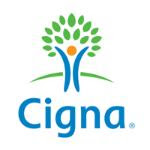But hold on just a moment! Before you don your bunad and commence your Norwegian adventure, there are a few fiddly administrative things to sort out (isn’t there always?). For one, getting yourself registered with a doctor and knowing who to call in case you sprain your ankle doing the hallingdans.
The good news is that Norway’s healthcare system is one of the best in the world. It’s predominantly financed by the government and administered by each kommune (municipality), with both public and private services and facilities.
The even better news is that anyone who contributes to folketrygden, the country’s National Insurance Scheme (NIS), can use its services.
If you’re eligible you’ll get full reimbursement of all costs associated with childbirth, treatment of children under the age of 16, and treatment of any work-related injuries. Parts of your healthcare costs will also be covered by the scheme, although you do have to “co-pay” a small fee for certain things like GP appointments or prescription medicines.
But before you can take advantage of the healthcare coverage, you’ll need to be registered in the National Register (folkeregister) as a resident of your local municipality. If you’re planning to work in Norway for a year or more you’ll automatically become a member of folketrygden from the moment you start paying taxes.
If you’re living in Norway but don’t have access to public healthcare, you should look into private health insurance like the packages offered by Cigna Global to make sure you have the appropriate cover. If you’re not insured, you’ll end up having to pay your medical expenses in full so it really is best to make sure you’re protected.
Find out more about Cigna Global Health Insurance
Finding a doctor
Most local areas have a helsesenter (public health centre) where you can see a fastlege (GP). All residents of a Norwegian municipality are entitled to register with a GP, who is responsible for examination, diagnosis, treatment, and prescribing medicine.
You can find and change GPs (up to twice a year) by logging into the Bytte fastlege service on the Helse Norge website. To access the site you’ll need your Bank ID, Buypass ID, or Commfides USB or card details to hand.
Once you’re registered all you need to do is call up and make an appointment. When you arrive at the clinic you should sit in the waiting room and wait for the doctor to call your name. There’s no need to fill in any paperwork or check in at the reception.
Many doctors in Norway can speak English, although you have the right to an interpreter if you can’t speak Norwegian. It’s always a good idea to call ahead and double check so an interpreter can be arranged if necessary.
You will be charged a small patient fee to see the doctor, generally around 180 kroner ($23); however, once you have paid more than a certain amount in fees, just over 2,000 kroner ($252), you get an exemption card and treatment is free for the rest of the year.
Emergency care
If you have an accident or need urgent care and can’t wait to see your GP, you can visit your nearest legevakt (emergency room). All municipalities in Norway have an emergency room that’s open 24 hours a day. You should call 116 117 to get in touch with your local emergency room. If the situation is life-threatening, you should call 113 straight away.
All immediate healthcare costs are covered, so you won’t be charged for emergency care.
Specialist care
Healthcare in Norway is divided into primary and specialist services. Your regular GP is responsible for referring you to a specialist, so they should always be your first port of call. However, unless it’s urgent you may end up waiting for a doctor’s appointment, and several more months to see a specialist.
Many people prefer to take out private health insurance as they can skip out the middleman and will be seen by a specialist much faster. When you choose a package with Cigna Global all specialist consultation fees will be paid in full, including intensive care by a specialist for as long as medically required.
Pharmacies
Each district ensures there is always one apotek, or pharmacy, open around the clock. You can find out the opening hours from the pharmacy itself or by calling directory assistance on 180.
All prescription medication and over-the-counter drugs are available in Norwegian pharmacies. The amount you have to pay for the prescription depends on whether it is “blue” or “white”.
You will get a blue prescription if you are suffering from a chronic illness and need medicine or special treatment for three or more months a year. Patients pay 39 percent of the cost of blue prescriptions (up to 520 kroner per prescription); you will have to pay white prescriptions in full, although fees may be covered if annual costs exceed 1775 kroner.
Insurance
The standard of healthcare and medical treatment in Norway is very high, but many expats still prefer to take out private health insurance while living abroad. Knowing you are covered no matter what happens can make you feel more relaxed throughout the relocation, and provide you with peace of mind in a country where you’re unfamiliar with the healthcare system.
Click here to get a free quote from Cigna Global
This article was produced by The Local Client Studio and sponsored by Cigna Global.




 Please whitelist us to continue reading.
Please whitelist us to continue reading.